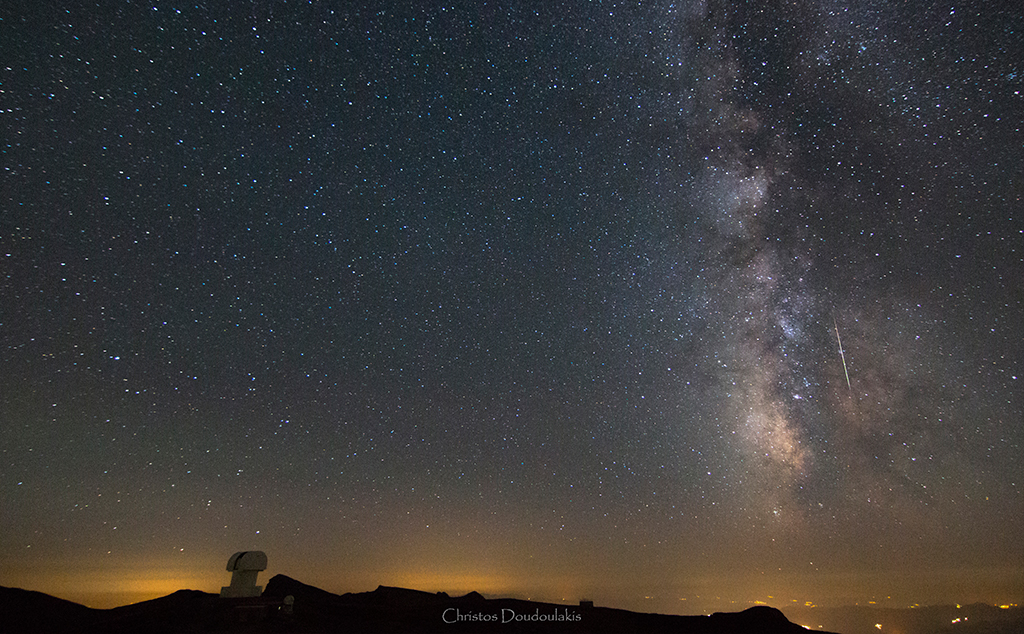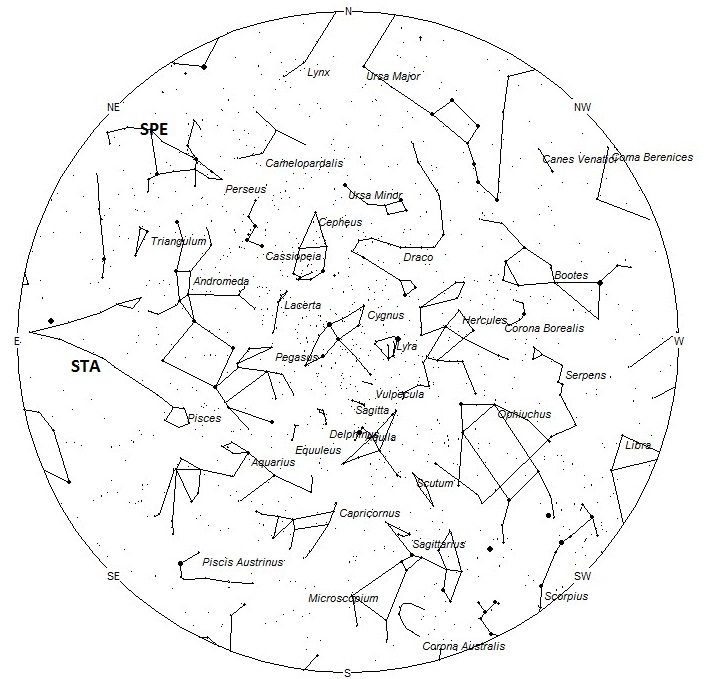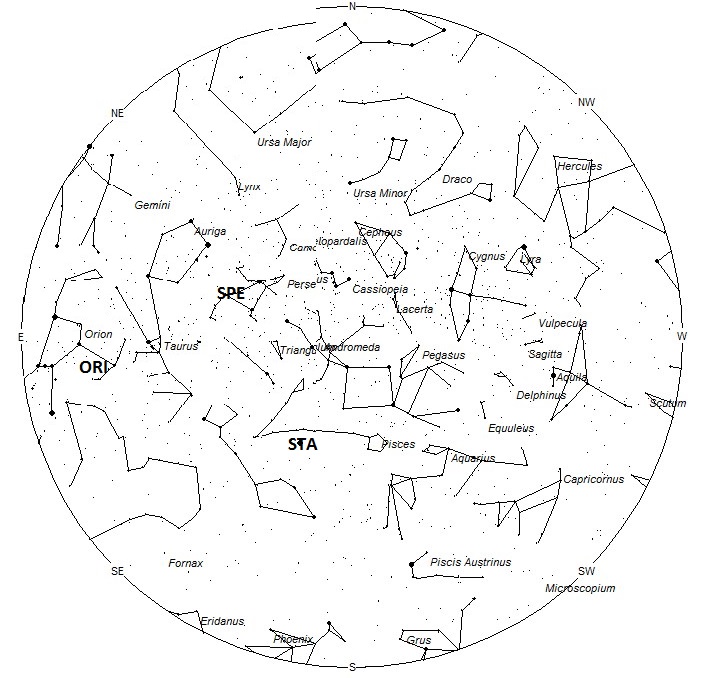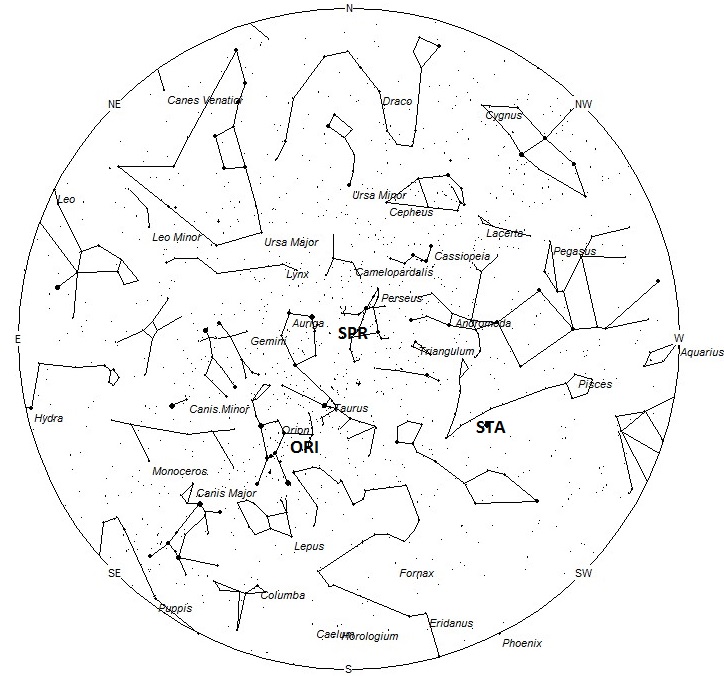
ƒ/3.2 – 11.0 mm 25s iso8000) © Christos Doudoulakis
During this period the moon reaches its last quarter phase on Friday September 23rd. At that time the half illuminated moon will rise near midnight local daylight saving time (DST). This weekend the nearly full moon will be in the sky most of the night, obscuring a majority of the meteor activity. This is the worst time of the month to try an view meteor activity as the active morning hours will be bathed in bright moonlight. The estimated total hourly meteor rates for evening observers this week is near 2 as seen from mid-northern latitudes (45N) and 1 as seen from tropical southern locations (25S). For morning observers the estimated total hourly rates should be near 8 as seen from mid-northern latitudes (45N) and 5 as seen from tropical southern locations (25S). Rates during this period are reduced due to moonlight. The actual rates will also depend on factors such as personal light and motion perception, local weather conditions, alertness and experience in watching meteor activity. Note that the hourly rates listed below are estimates as viewed from dark sky sites away from urban light sources. Observers viewing from urban areas will see less activity as only the brightest meteors will be visible from such locations.
The radiant (the area of the sky where meteors appear to shoot from) positions and rates listed below are exact for Saturday night/Sunday morning September 17/18. These positions do not change greatly day to day so the listed coordinates may be used during this entire period. Most star atlases (available at science stores and planetariums) will provide maps with grid lines of the celestial coordinates so that you may find out exactly where these positions are located in the sky. A planisphere or computer planetarium program is also useful in showing the sky at any time of night on any date of the year. Activity from each radiant is best seen when it is positioned highest in the sky, either due north or south along the meridian, depending on your latitude. It must be remembered that meteor activity is rarely seen at the radiant position. Rather they shoot outwards from the radiant so it is best to center your field of view so that the radiant lies at the edge and not the center. Viewing there will allow you to easily trace the path of each meteor back to the radiant (if it is a shower member) or in another direction if it is a sporadic. Meteor activity is not seen from radiants that are located below the horizon. The positions below are listed in a west to east manner in order of right ascension (celestial longitude). The positions listed first are located further west therefore are accessible earlier in the night while those listed further down the list rise later in the night.
These sources of meteoric activity are expected to be active this week.
Detailed information on each source will resume next week when observing conditions are more favorable.
| SHOWER | DATE OF MAXIMUM ACTIVITY | CELESTIAL POSITION | ENTRY VELOCITY | CULMINATION | HOURLY RATE | CLASS |
| RA (RA in Deg.) DEC | Km/Sec | Local Daylight Saving Time | North-South | |||
| Southern Taurids (STA) | Oct 10 | 01:00 (015) +05 | 29 | 02:00 | 1 – 1 | II |
| September Epsilon Perseids (SPE) | Sep 9 | 03:56 (059) +41 | 65 | 05:00 | 1 – <1 | II |
| Orionids (ORI) | Oct 22 | 05:00 (075) +04 | 67 | 07:00 | 1 – 1 | I |
 American Meteor Society
American Meteor Society



Hi,
I am located in wendover, ontario, canada.
I was headed home yesterday night it was about 930pm and I saw a blue light shinning star that burnt out like a firework, but nothing about it on the Internet.
I saw the same thing last night 11.36pm in Kent England. Cannot find anything on the net except your sighting earlier this month.
Saw a white ball that turned green work a white tail in Tunbridge Vermont at around 930 pm
Saw what may have been a meteor last night around 2am, I live in Camden County New Jersey. It was brighter than any other I’ve seen, and lasted a little longer two. It was low in the sky . Meteor or burning space junk??
On September 21,2016, I saw a beautiful green glowing light appearing just below the Big Dipper traveling from east to west. It only lasted a few seconds. We are in Newport Center, VT.
travelling last night from santa fe new mexico…near the end of twilight a very bright and prolonged white light descended in the north-facing portion of the sky. anyone else see this?
I saw the same thing described by some on this post. September 21, 2016 ~9:30pm EST, Peterborough Ontario
In the eastern sky travelling south to north.
started as a white smudge and grew very bright and turned green before it disappeared.